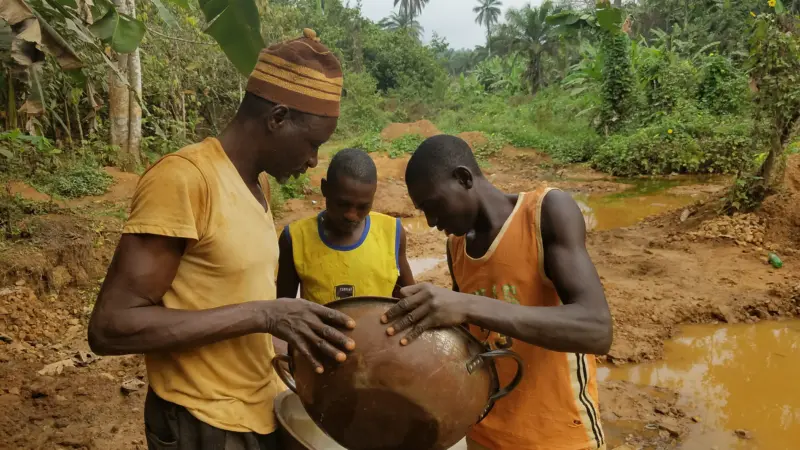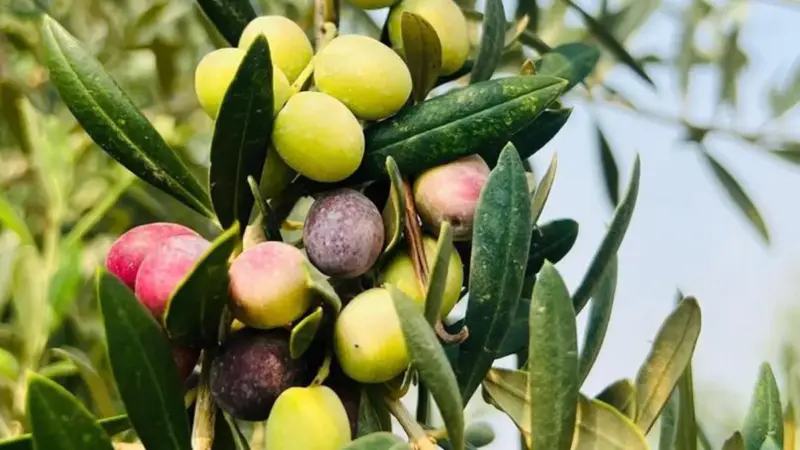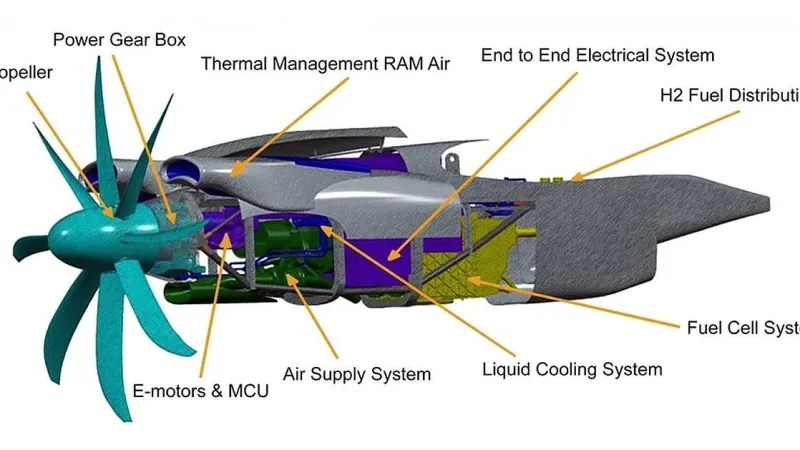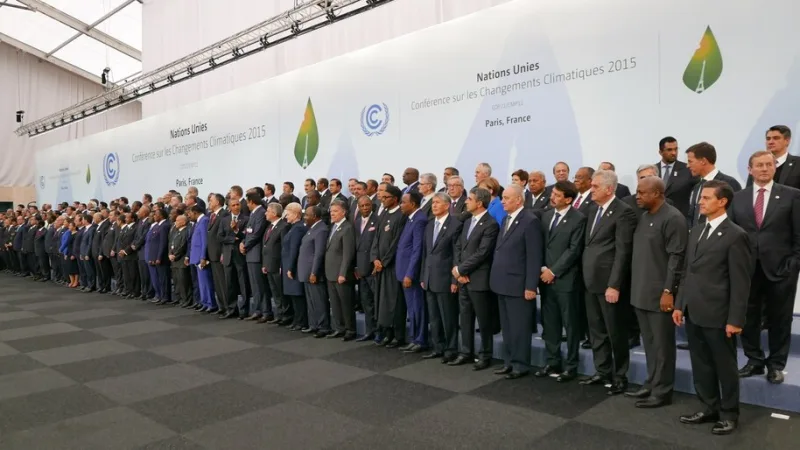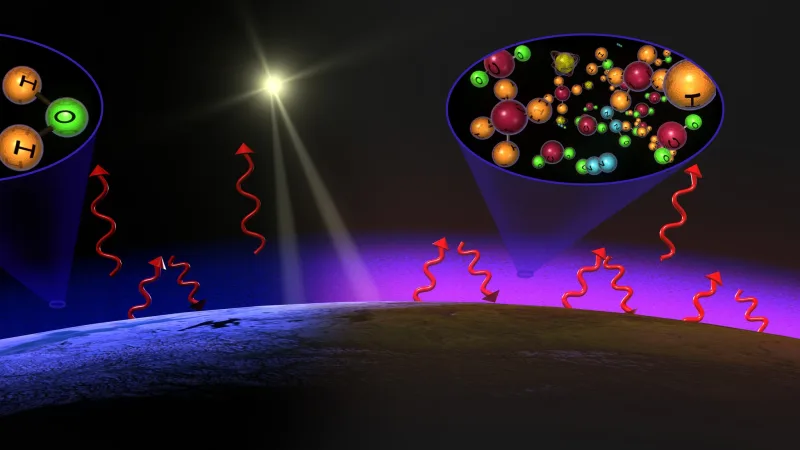Is Earth Running Out of Freshwater Resources?
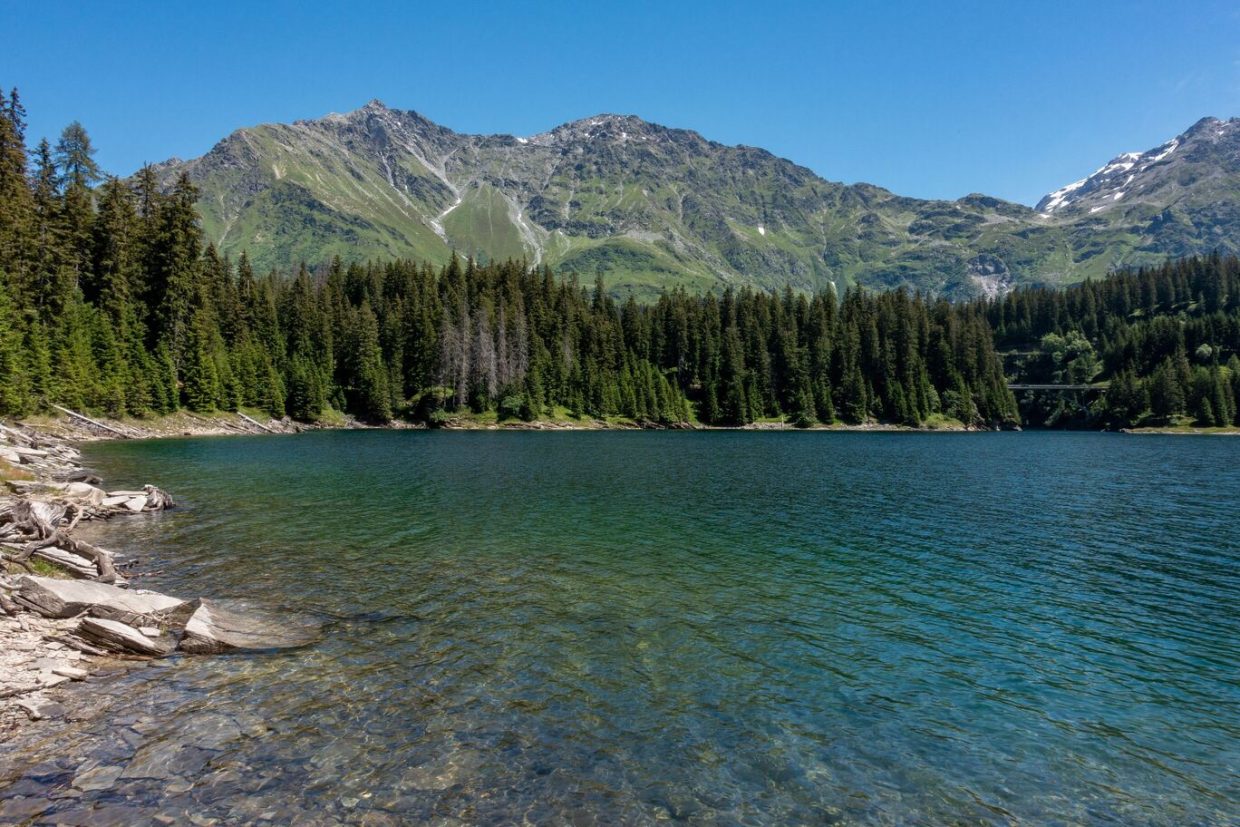
How much fresh water does our planet have left? This crucial resource is in limited supply, with only 1% of the world’s water accessible for human consumption. Unfortunately, population growth and pollution are exacerbating water degradation in developing countries, posing threats to fisheries, agriculture, and public health. Additionally, climate change is intensifying droughts, further compounding the issue.
To put things into perspective, imagine that the entire world’s water supply could fit on a map of the United States. Even more staggering is the fact that the water we have represents just a fraction of the Earth’s total volume. The oceans, which seem vast, actually make up a relatively small portion. According to the US Geological Survey’s 2019 monograph titled ‘How much water is there on Earth,’ the largest bubble representing all water on the planet would be about 1,385 kilometers in diameter. This includes water in the atmosphere, rivers, lakes, ice caps, glaciers, underground sources, and even within living organisms.
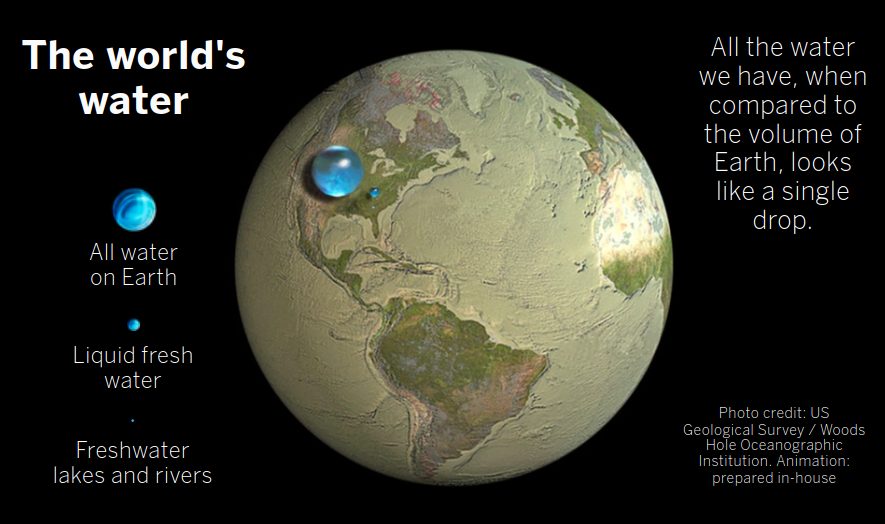
Of this total water volume, only a medium-sized sphere encompasses liquid freshwater, with a mere 1% available for human use. The majority of freshwater, about 99%, is found in groundwater and is largely inaccessible. Surface freshwater, such as lakes and rivers, is crucial for sustaining life and represents a small sphere with a volume of approximately 93,113 cubic kilometers.
It is important to note that 96.5% of all water on Earth is saline, leaving just 3.5% as fresh water. However, of this fresh water, about 60% exists as ice in the polar regions and glaciers, while another 30% is found underground. This means that only 1% of the total water supply is readily available for human consumption and sustaining ecosystems, as reported by respected organizations like the USGS and books like ‘Water in Crisis: A Guide to the World’s Fresh Water Resources’ published in 1993.
The state of conservation for this vital resource has improved in developed countries, such as those in Europe. However, developing countries face worsening conditions due to urban population growth, increased material consumption, and untreated wastewater. Studies, including the UN Environment Programme’s 2016 report ‘A Snapshot of the World’s Water Quality: Towards a global assessment,’ highlight the severe pollution affecting river stretches in Latin America, Africa, and Asia. Fisheries, agriculture, and people’s health are at risk as a result.
Solutions for Sustainable Water Management
We believe that the solution lies in managing our existing water resources more efficiently rather than solely relying on increased supply. We must promote the use of recycled water for non-human consumption purposes like industrial processes, irrigation, and street cleaning. Additionally, optimizing distribution networks to minimize losses and raising public awareness about responsible water usage are crucial steps.
Experts like Alberto Garrido, director of the Botin Foundation’s Water Observatory and professor at the Polytechnic University of Madrid, recommend implementing intelligent network and storage management systems. Increasing the efficiency of water usage in urban, industrial, agricultural, and livestock settings, as well as adopting desalination, wastewater treatment, and reuse practices, can contribute to resource sustainability. Coupling this with strategic management of groundwater resources and improving irrigation techniques can help mitigate water scarcity issues.
Agriculture’s Role in Water Conservation
Agriculture, which accounts for about 70% of water consumption, plays a significant role in water management. Coordinating scarcity with adjustments in irrigation allocations, introducing crop rotation, and improving irrigation efficiency can reduce water usage. Measures to improve the ecological status of water bodies and the quality of groundwater are also important aspects of sustainable water management.
Innovations in Mitigating the Water Crisis
To address the ongoing water crisis, various innovations are emerging. For instance, fog collectors and nano-membrane toilets developed by Aqualonis and Cranfield University, respectively, offer unique solutions to mitigate water-related problems.
Cities worldwide are implementing sustainable urban drainage systems and embracing the idea of sponge cities. These initiatives, coupled with removing asphalt and creating space for land to absorb and retain water, contribute to greater resilience in the face of climate change, replenishing aquifers and reducing runoff.
The water crisis is not limited to developing countries. Latin America and the Caribbean, despite possessing a significant portion of the world’s water resources, face challenges in terms of urban and agricultural water stress and limited access to safe drinking water.
Globally, approximately two billion people lack access to safe drinking water. The World Water Development Report released ahead of the UN 2023 Water Conference warns that at current rates, only 37% of sub-Saharan countries’ population will have safe water by 2030. In the coming decades, the number of people living in water-stressed urban areas may reach between 1.7 and 2.4 billion if we do not take immediate action to address the impacts of climate change and the increasing frequency of extreme droughts.
It is vital to recognize that climate change is primarily a water crisis. As it worsens, we experience floods, rising sea levels, wildfires, and diminishing ice fields. The United Nations emphasizes the need to address the water crisis urgently. We must take collective action to ensure the sustainable management of this precious resource and secure a better future for all.

